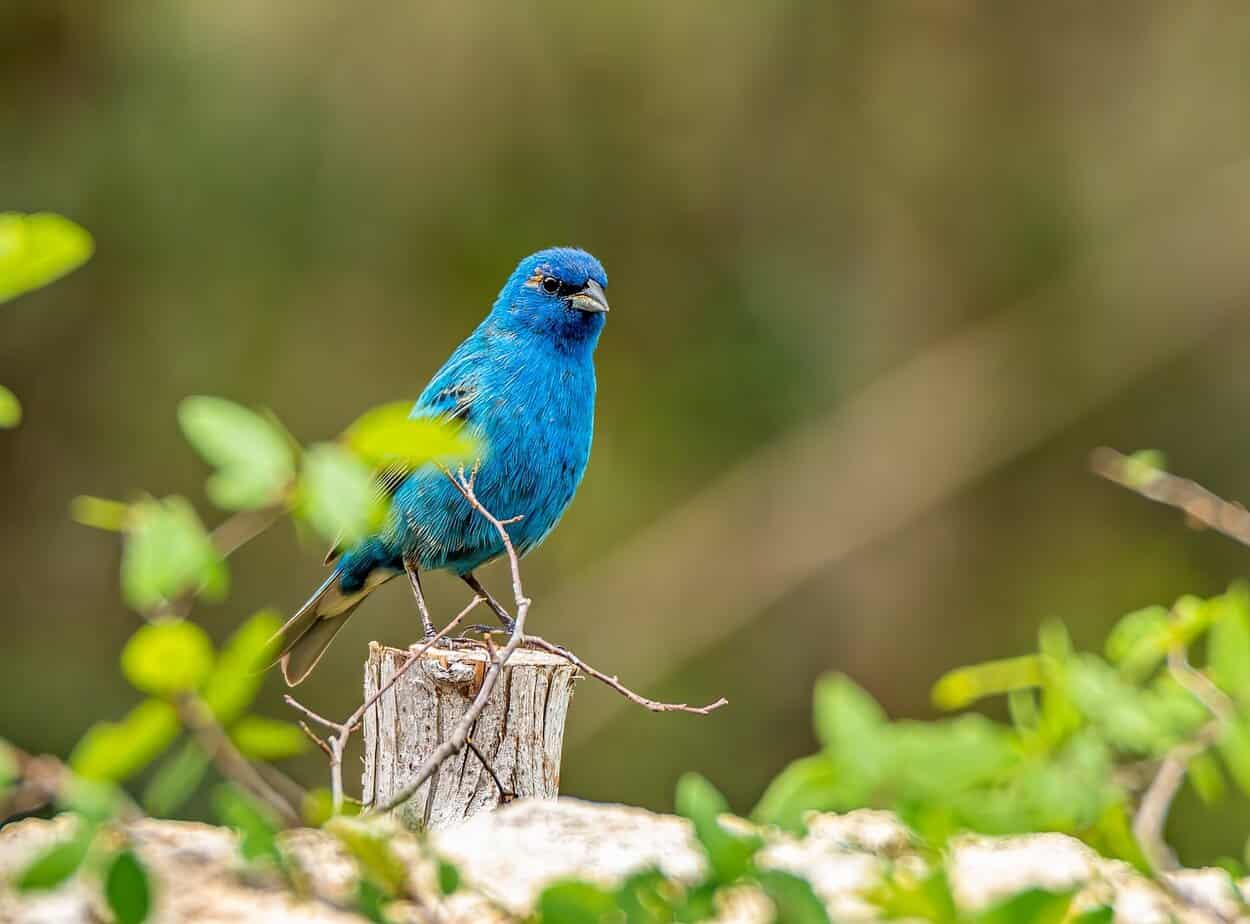
Texas Birding tops many birder’s bucket list. With miles of undeveloped coastline, it offers migratory birds what they need—shelter, food and water. Texas is considered one of the best places for bird watching in the U.S. Geographically, Texas offers two flyways or paths that the birds follow on their seasonal migrations. Some birds spend their winters along the Texas Gulf Coast. Other birds drop in for a few days of rest before the final leg over the Gulf of Mexico to the Yucatan. Here are the birding hotspots for the best birding in Texas to plan your getaway.
Best Birding in Texas
-
Port Aransas
-
Corpus Christi
-
Beaumont
-
Galveston
-
Mid Texas Coast
-
South Texas
Best Time to See Birds in Texas
Birds will always be found in Texas. With mild winters, songbirds live throughout the seasons as long as they find food, water and shelter. And many residents feed the birds, especially in the wintertime.
For the hard-to-spot bird species and endangered birds, spring and fall are the best times to see birds in Texas, especially on the Texas coast. Birds fly anywhere from 18 to 24 hours to reach the coast in Mexico’s Yucatan Peninsula. As the last sliver of land before the overwater and usually overnight flights, most birds rest up before continuing their migration.
Central Flyway in North America
North America features four flyways: Atlantic, Mississippi, Central and Western. The Central Flyway touches the Mississippi Flyway that follows the Mississippi River. Birds west of the Rocky Mountains use the Pacific Flyway to get to the warmer weather of Central America. Birds from the Canadian Maritimes use the Atlantic Flyway to migrate down the eastern seaboard to Florida and the Caribbean.
The Central Flyway starts in the western parts of Canada, heads south, and generally follows the Great Plains. With a good source of water and food, Some birds begin their migration in Canada’s Northwest Territories heading south for the Texas Coast or continuing to Mexico or Central America.
Mississippi River Flyway
Starting in Central Canada, about 325 different bird species use the Mississippi River Flyway to reach warmer weather. Generally following the rivers, birds use the Mississippi, Missouri and Ohio Rivers for navigation.
About 40 percent of shorebirds and waterfowl use this route. Some of the top species include the Brown Pelican, Red Knot and the Little Blue Heron.
Texas Swimming Hole GuideTexas Caves to Explore
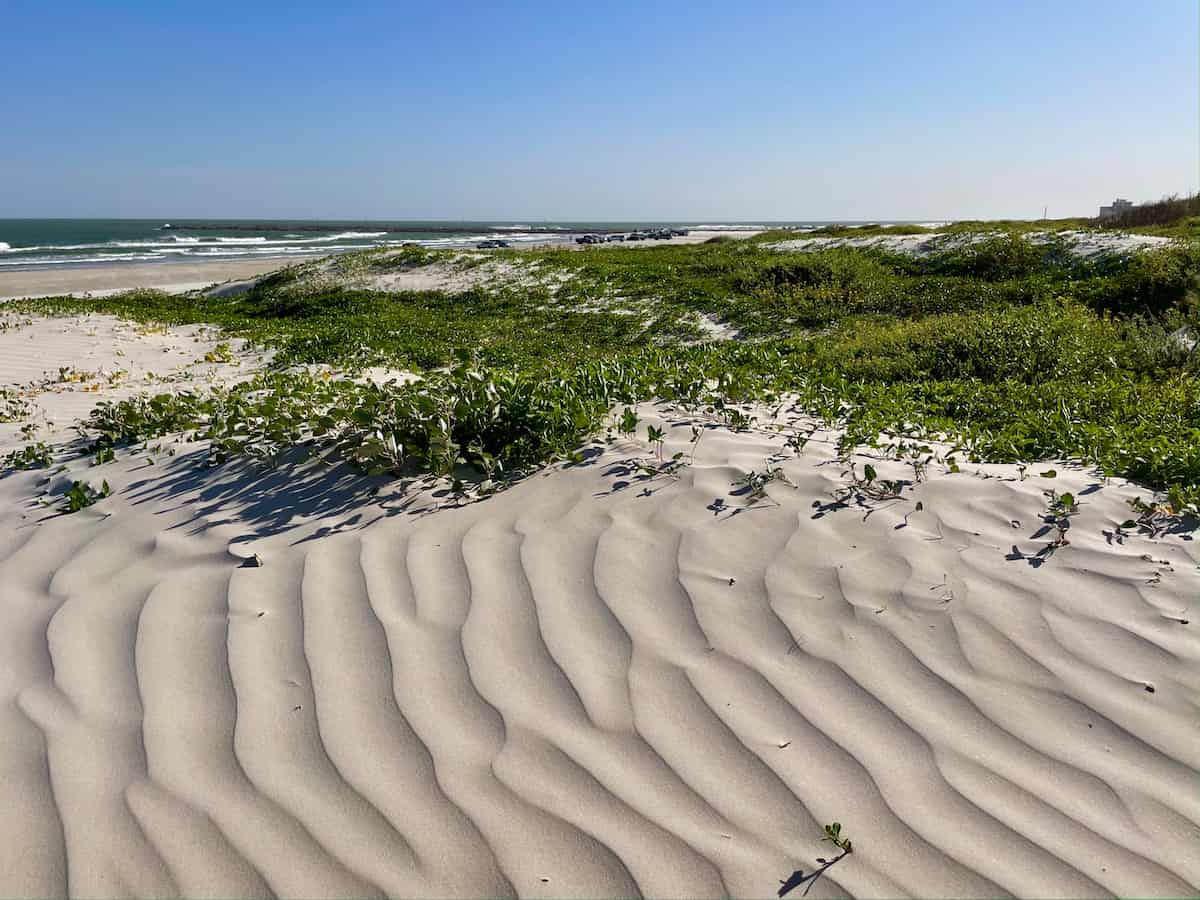
Best Birding Sites Near Port Aransas
By planting native plant species, birds munch on bugs and sip on nectar in Port Aransas. Each offers equal parts protein and sugar for the long journey to or from Mexico. There are several sites dedicated to birding across the island, and you are free to enjoy from dawn to dusk. This is one of the areas for the best birdwatching in Texas.
Mustang Island State Park
With five miles of coastline on the Gulf of Mexico, Mustang Island State Park offers a popular birding hotspot with its coastal sand dunes that can reach heights of 30 feet. The park has recorded 400 different bird species and a great destination for families since it features a deep beach with restrooms.
Birders come for the chance to see the Aplomado Falcon, an endangered bird. In 2012 and 2013, 65 captivity-bred Aplomado Falcons were released at Mustang Island State Park. Numerous other bird species are found at Mustang Island State Park, like herons, egrets, ibises, and terns, along with the ever-present plover and gull.
Located at 9394 State Highway 61, Open daily 8 a.m. to 5 p.m. Adult admission is $5 for those 12 and older.
Aransas National Wildlife Refuge
On the mainland and northeast of Port Aransas, the Aransas National Wildlife Refuge is a top birding destination in Texas. It offers a visitor center to learn more about this important bird refuge, hosts 400 different bird species, and is open Wednesday to Sunday from 9 a.m. to 4 p.m.
With its large peninsula and coastal bays, see the Whooping Crane on its road to recovery after nearly becoming extinct. From their home in Wood Buffalo National Park in Canada’s Northwest Territories, the Whopping Cranes usually arrive in October and stay until early April before migrating back.
In 1941, only 15 whooping cranes were found in the Port Aransas National Wildlife Refuge. Through a breeding program and protecting their habitat, the current whooping cranes are descendants of those 15.
As a popular stopover on the Central Flyway, the colorful Painted Punting uses this area as a breeding ground in the winter. It is also the year-round home to the Brown Pelicans.
Located at 1 Wildlife Circle in Austwell. Open dawn to dusk. Free to enter.
Top Things to Do in Port Aransas

Leonbelle Turnball Birding Center
With a 700-foot boardwalk overlooking freshwater wetlands, the Leonbelle Turnball Birding Center is the most popular site for birding in Port Aransas. It offers a large body of water so birds gather throughout this area. And don’t miss Boots the resident alligator, who is often spotted under the observation tower. Additionally, visitors will find a grove of native trees and a pollinator garden for the migrating Monarch butterflies.
For a guided birding walk by local birding experts, head to the boardwalk on Wednesday at 9 a.m. Located at 1356 Ross Ave. in Port Aransas. Free and open from dawn to dusk.
Port Aransas Nature Preserve
With three miles of hiking and biking trails, the Port Aransas Nature Preserve is a popular birding and recreation site on the Intracoastal Waterway. With a mixture of coastal prairie plants and native grasses, it’s next to the tidal salt flats of the Corpus Christi Channel. Visitors will find a covered pavilion overlooking the inlet and beyond.
Located at the end of Port St. Free and open from dawn to dusk.
Joan and Scott Holt Paradise Pond
As the smallest site, the Joan and Scott Holt Paradise Pond features a small freshwater pond important for bird welfare. Blue Winged Teals and Black-Bellied Whistling Ducks can frequently be found at Paradise Pond.
Located off Cut Off Road near the intersection of W. Avenue C. Free and open dawn to dusk.
Top Things to See in Corpus Christi
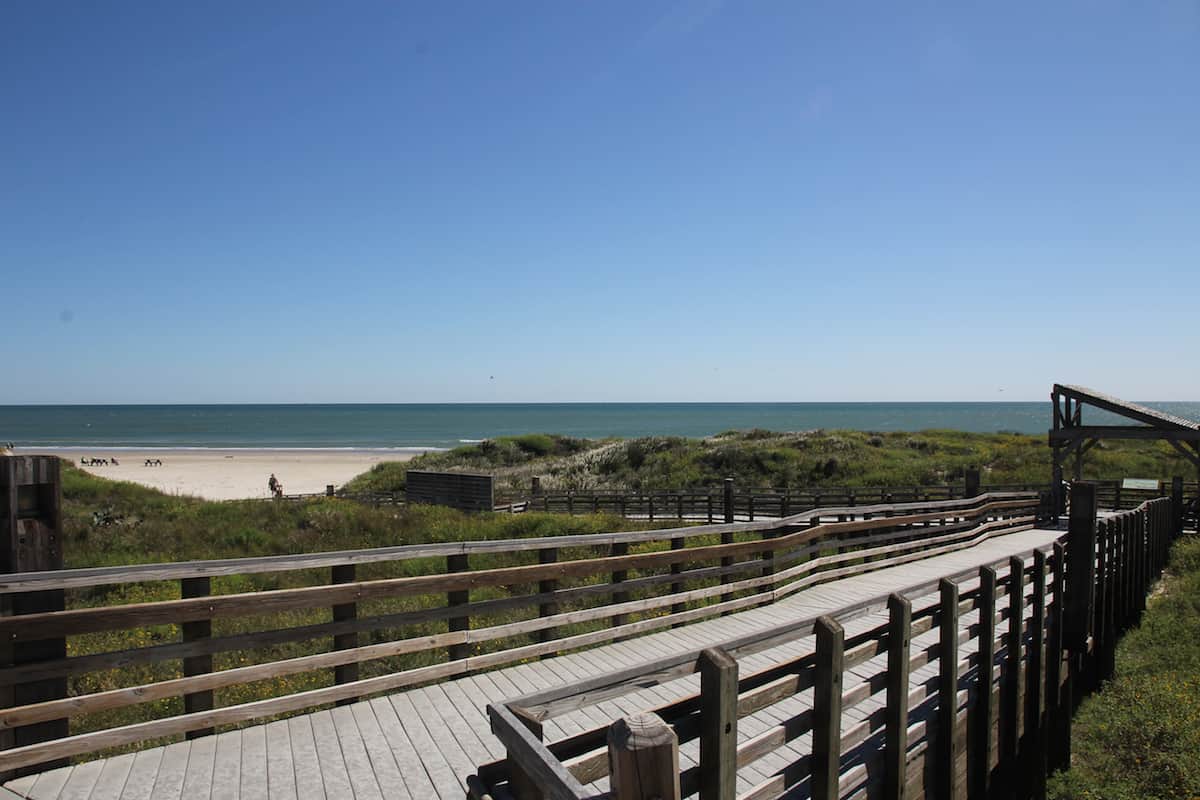
Best Birding in Corpus Christi
As a part of the Central Flyway, birds are frequent visitors in Corpus Christi, especially in spring and fall. To add some birding to your trip, head to a nature reserve or park.
Padre Island National Seashore
As the longest undeveloped barrier island in the world, Padre Island National Seashore is a vital part of the ecosystem with its natural dunes and coastal prairies. With shorelines on the Gulf of Mexico and the Laguna Madre, or one of the six hyper-saline lagoons in the world, Padre Island National Seashore offers refuge for many species, including migratory birds and the Kemp’s Ridley sea turtle, the most endangered sea turtle species.
Each spring, mother sea turtles come ashore and lay eggs in sand nests then head back to the Gulf. Since 1978, teams of scientists and volunteers have dug up the eggs to ensure their safety. The eggs are buried in a safe and corraled area away from predators. Then the tiny hatchlings are released in June as crowds watch and keep seabirds from snatching the tiny turtles as they march towards the waves.
Padre Island National Seashore isn’t the only area dedicated to saving the Kemp’s Ridley sea turtle. It’s a region-wide effort with Port Aransas and Corpus Christi each collecting eggs from their beaches and releasing hatchlings the following summer.
In addition to the five different sea turtle species that frequent the park, birds find sanctuary in the Padre Island National Seashore. From fall through spring, migratory birds are popular visitors, like several species of plovers, wrens, warblers, sparrows and the popular pelicans.
For shellers, the Padre Island National Seashore offers more shells with less competition, and visitors can take the shells with them. For beachgoers, find miles of sand (60 miles of drivable beach) so there’s plenty of room to spread out.
Located on North Padre Island on Park Road 22 (Highway 358). One-day admission is $10 per vehicle.
Blucher Park
Near the center of Corpus Christi, this park has been a nature preserve since 1942. With nearly 4 acres, it is a major spot on the Great Texas Coast Birding Trail. It offers lots of tree cover and a few trails with water sources for the birds.
Located at 209 S. Tancahua St. in Corpus Christi. Blucher Park is open 24 hours a day, 7 days a week. It is free to enter.
Hans and Pat Suter Wildlife Refuge
South of Downtown Corpus Christi and next to Oso Bay, birders can enjoy a 1-mile nature trail with an 800-foot boardwalk. The area blends marshy flats with native grasslands and mudflats for a variety of habitats. Additionally, find picnic tables and viewing platforms at the Hans and Pat Suter Wildlife Refuge.
Located at 6001 Ennis Joslin Rd. in Corpus Christi. It is open from 5 a.m. to 11 p.m. and free to enter.
Beaumont Best Spots with Kids
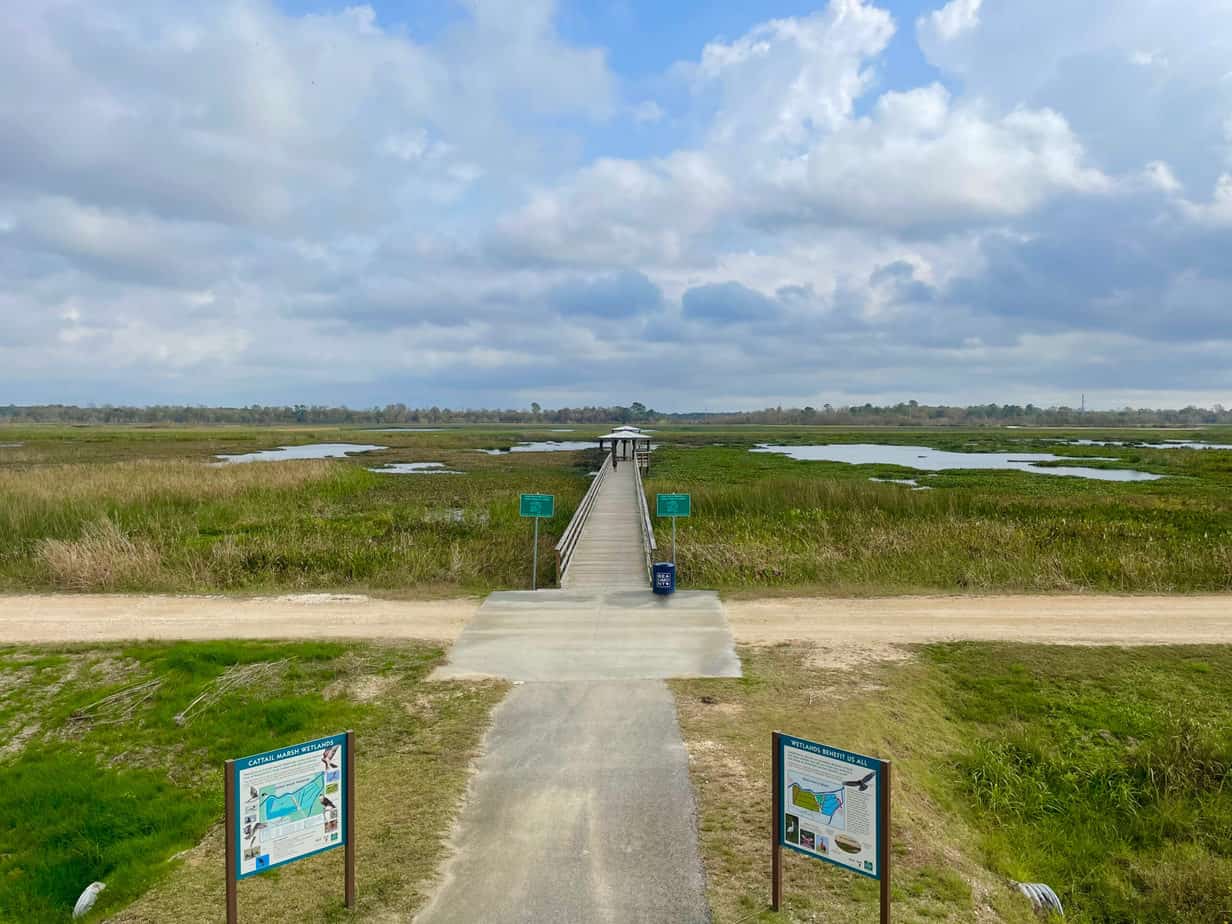
Best Birding near Beaumont
Beaumont is a premiere birding site in Texas, especially during the spring and fall migration. Visitors can learn about the birds that migrate through Beaumont along the Mississippi Flyway and the Central Flyway before heading overwater to Yucatan peninsula of Mexico.
Cattail Marsh Wetlands Education Center & Boardwalk
The Cattail Marsh Wetlands is a 900-acre area dedicated to birding and was once a water reclamation site. Find boardwalks and an elevated viewing platform to see some of the more than 250 species of birds that visit annually. The education center is elevated and offers an excellent place to view the entire wetlands.
Located at 4233 Babe Zaharias Dr. Free to enter and open dawn to dusk.
Anahua National Wildlife Reserve
National wildlife reserves protect vital areas for animals; Anahua protects 34,000 acres of Intracoastal waterways for migratory birds and is considered one of the Texas birding hotspots. Each spring and fall, birds move through the area on their way to and from the Yucatan Peninsula in Mexico.
A quiet reserve to explore, the Shoveler Pond features a 2.6-mile auto loop through the wetlands. During my visit, in addition to birds like blue herons, I saw small alligators. The Anahua National Wildlife Reserve offers many hiking trails and features a visitor center as well.
Located at 4318 FM 1985. Open from dawn to dusk and free to enter. The visitor center is open Friday to Sunday from 9 a.m. to 4 p.m.
Best Things to do in Galveston
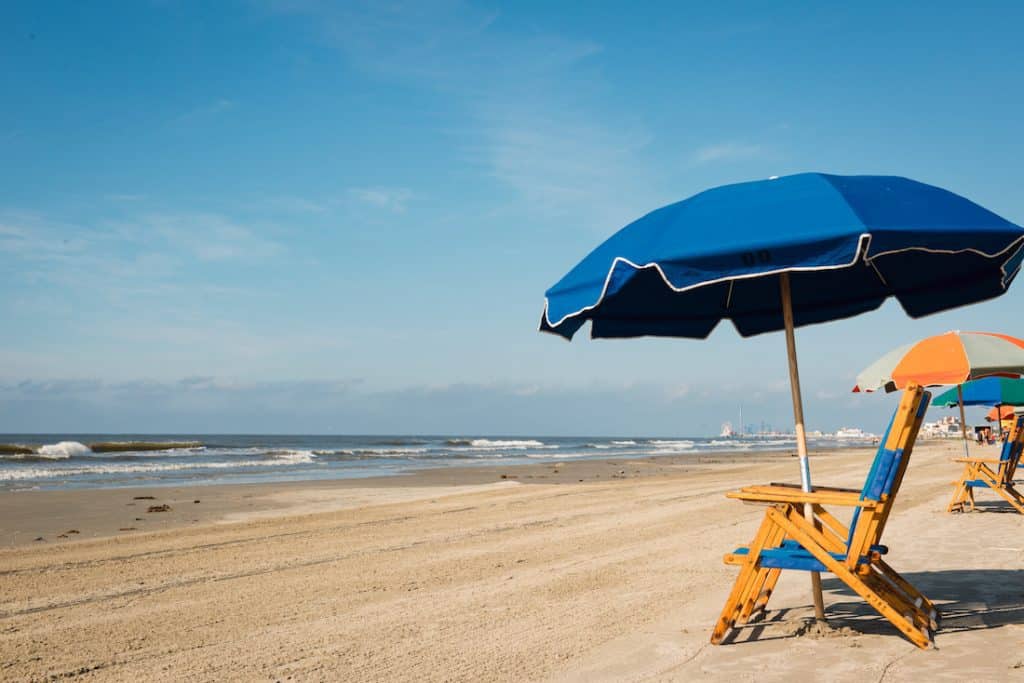
Best Birding near Galveston
Galveston Island State Park
With over 300 different varieties of birds spotted in the Galveston Island State Park, it’s a birding destination on the western part of Galveston Island. In addition to shore birds, head to its boardwalks to see birds in the marshlands in the 2,000 acres of the park.
For a quieter beach, Galveston Island State Park offers beach camping. Paddlers will find several paddling trails, and it’s a popular place to fish that doesn’t require a fishing license.
Located at 14901 FM 3005 on the west end of the island. Adult admission (13+) $5 and kids 12 and under are free.
Bolivar Flats Shorebird Sanctuary
With its location in Bolivar, visitors will have to take the Bolivar Ferry to reach the Bolivar Flats Shorebird Sanctuary, managed by the Houston Audubon Society. It’s a protected area with marshlands and beaches that the shore birds use for feeding and nesting.
Located off Highway 87 at Rettilon Rd. Bolivar Beaches require a beach parking permit ($10, available locally).
High Island
As the more developed site on the Bolivar Peninsula, High Island features several sites to see migratory birds, especially in spring and fall. There are four sanctuaries on High Island: Boy Scout Woods, Smith Oaks, Eubanks Woods, and Gast Red Bay. This is one of the areas for the best birdwatching in Texas.
The Smith Oaks Bird Sanctuary features a boardwalk. For the best time to see migratory birds, visit during spring and fall, especially after a strong cold front in which birds ride its beneficial tailwind.
The Smith Oaks Bird Sanctuary is located at 2205 Old Mexico Rd, and the other sanctuaries are located close by. All sanctuaries are open daily from dawn to dusk. Day passes are $10 per person and kids can enter for free.
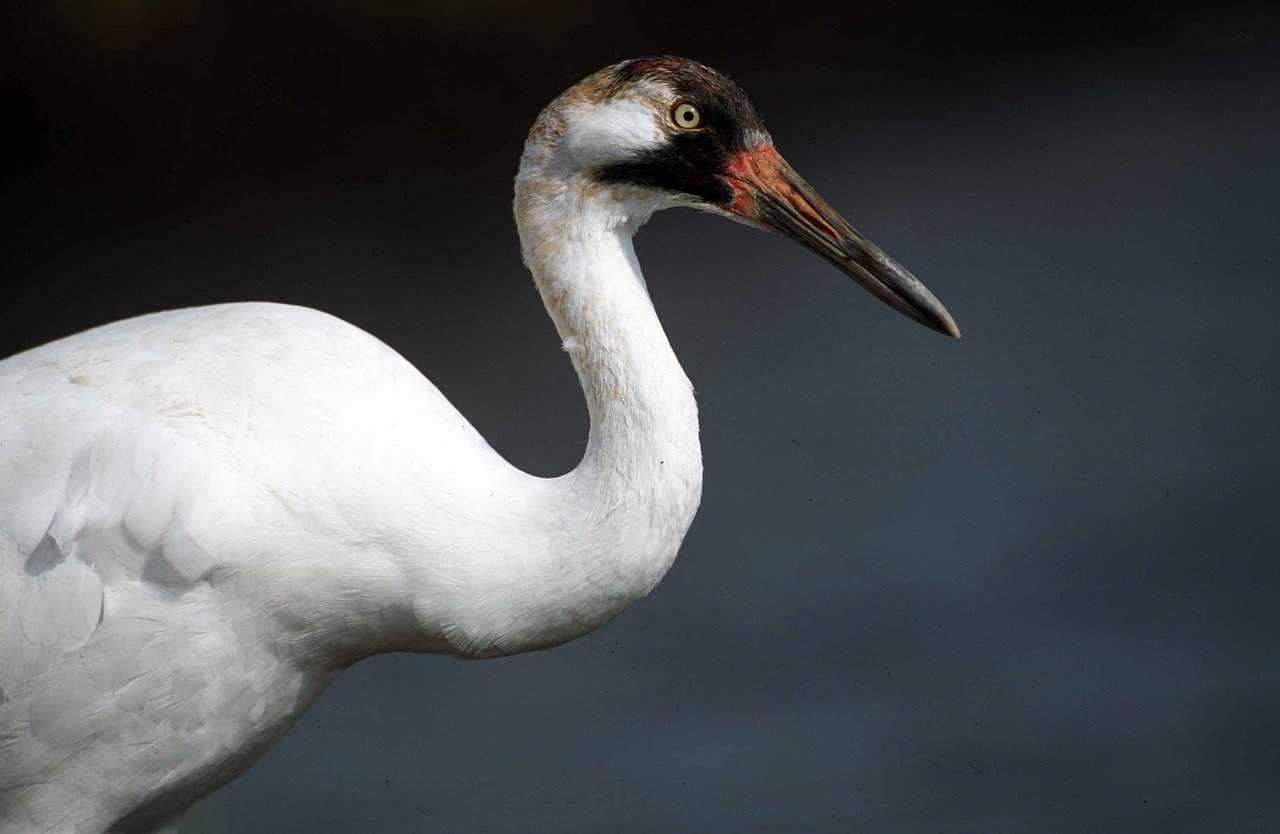
Best Birding along Mid Texas Coast
Brazoria National Wildlife Refuge
Protecting more than 44.000 acres, Brazoria National Wildlife Refuge offers areas with both freshwater and saline water environments and is one of the most biologically diverse areas in Texas. This area features 320 species of birds along with 130 species of butterflies and dragonflies, also migratory.
It offers the Big Slough Auto Tour, a 7.5-mile route loop between several ponds for wildlife viewing. The Discovery Center is also another place to visit, open from Friday to Sunday.
Located near 2020 CR 227 in Freeport. Open from dawn to dusk and free to enter.
San Bernard National Wildlife Refuge
With over 45,000 acres along the mid-Texas Coast, it protects over 300 bird species, like the Great Blue Heron. The Atlantic Ridley also comes ashore at the San Bernard National Wildlife Refuge.
Located at 6801 County Rd. 305 in Brazoria. Open from dawn to dusk and free to enter.
Best Birding in South Texas
Laguna Atascosa National Wildlife Refuge
As the largest protected area in the Rio Grande Valley, 415 species have been spotted within the Laguna Atascosa National Wildlife Refuge along with 130 butterfly species. It is one of the best places for birding in Texas.
Winter visitors include about 80 percent of the Red Headed Ducks, along with migratory songbirds. Raptors, like the migrating Peregrine Falcon pass through the Laguna Atascosa National Wildlife Refuge along with the endangered Ocelot. There are 60 miles of hiking and biking trails within the refuge.
Located at 22688 Buena Vista Blvd. Open from dusk to dawn and free to enter. The visitor center is open Thursday to Sunday from 8:30 a.m. to 4 p.m.
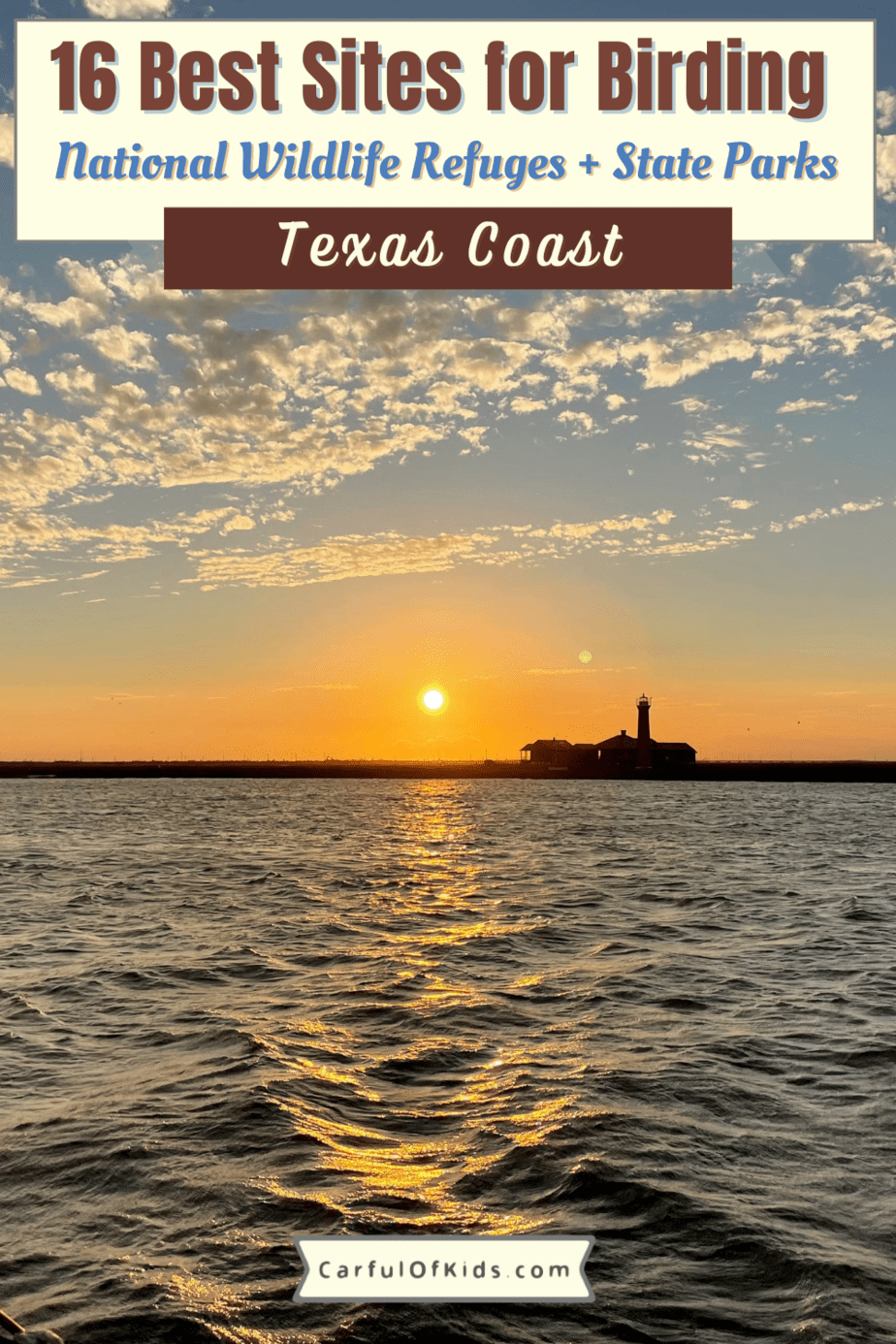
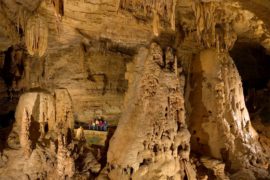
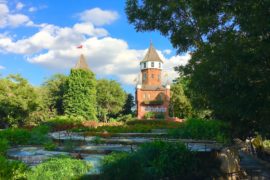

Comments are closed.